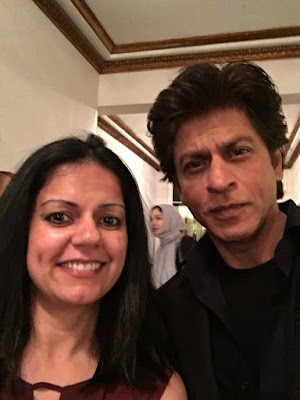Indian Born Confused Desi
I’ve been living in the US for 10 years now and beginning to
reach a saturation point. Living away from home can make you love and judge
your country at the same time. You are privy to social and political
differences every day and it is only human to compare them.
As a Delhiite and curious about other peoples’ businesses, I’ve
always compared social-cultural differences the most.
Initially, I couldn’t help but notice the dress wear of other
women – inevitably checking them out and staring. It was second nature to me and
I just didn’t know how to hide my curiosity. As Indians, I think we wear our
curiosity on our sleeves.
It was only after a first few months that I realized it was
rude to stare in the US. People checked you out through side glances or sun-glasses,
and with polite smiles when caught red-handed. I mastered the skill of “hidden
stares” and started to feel it was uncouth to stare openly like I used to. I judged
my culture, and therefore, I judged the old me.
The judgements spanned from small social nuances to the way
traffic etiquettes were mismanaged back home, to the way women were treated in the
society. I started to feel grateful to belong to a “better” environment and
live the American dream.
I transformed as an individual and adapted habits to fit
into the culture. My sense of style and fashion changed, I became interested in
art and history, my English accent changed, I became more punctual, etc. etc. The
bottom line was -- my identity transformed significantly as a result of living
and breathing another culture. When the time came to visit homeland, it was my
15 mins of fame. I was the celebrity child who lived in America and therefore, socially
superior in some weird respect. I never got so much importance when I lived
there.
However, after exactly 10 years of living in the US, I lost sense
of what it took to be Indian. What did it mean when I said I was an Indian? Only
a few constants had remained – religion, my love for Bollywood, and a sense of
nostalgia and remembrance of childhood. Otherwise, it was clouded with judgements
about corruption, gender gaps, hideous weather and lack of freedom for women in
the society.
I realized that I’d lost pride as an Indian – and therefore,
my pride as an individual. After all, I can’t disassociate India from my
identity - despite Western penetration into my subconscious and confidence.
It took me six weeks in India to scratch the surface of what
it meant to be Indian. For the first time in a decade, I wasn’t comparing but
hoping to understand people from a fresh perspective, the “why” behind actions
and dig deeper beneath the surface.
Every day, I practiced to reform perspectives by talking to
strangers and acquaintances, what motivated them and the challenges they traversed – real struggles
of money, education, poverty and self-esteem. The hardships that were often underestimated in the entitled world of West.
In the next few write-ups, I will share those experiences
and interactions with people in north India that made me realize what it meant
to be Indian. I am grateful to them as they reinstated a sense of real pride.
While certain issues still persist in my heart such as the
way women are treated in our society, but I’m no longer judging the problem as
an “outsider” and hoping to change as much as possible over time.
For now, I am very happy not trying to fit in. With a renowned sense of pride, I am thrilled to wear salwar kameez, Indian junk jewelry and palazzos
whenever I want in the US, embracing where I come from wholeheartedly, and
therefore – embracing my own identity.



Comments
Post a Comment